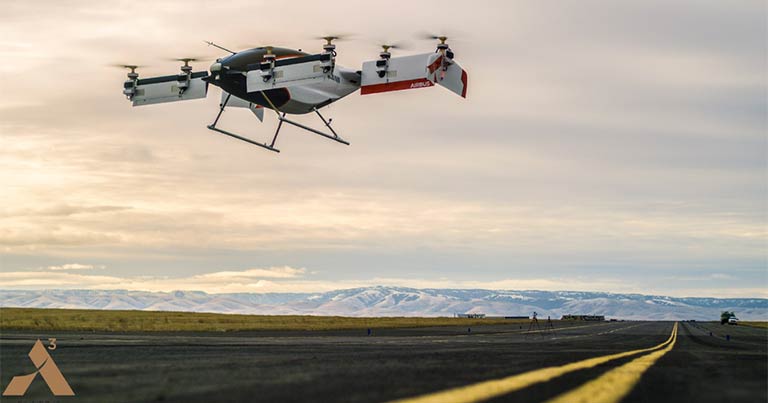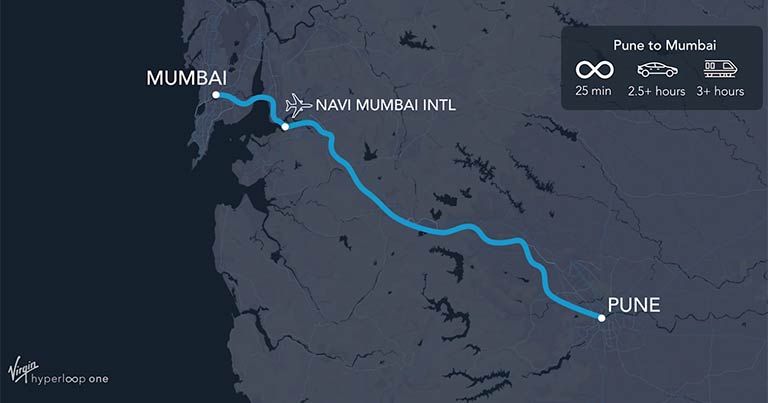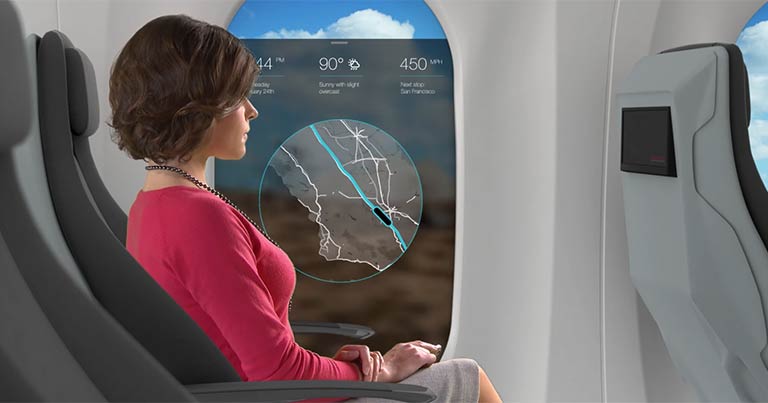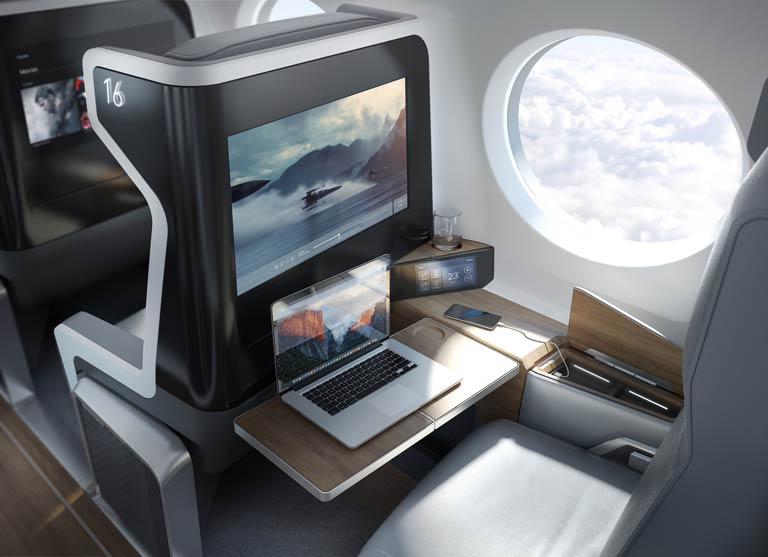The air transport industry is ripe for disruption. Whether it’s the development of on-demand electric aircraft or the emergence of entirely new forms of transportation, new entrants and established industry players are innovating in an attempt to re-write the rulebook.
Just six months ago, FTE reported on how a new generation of disruptors is planning to redefine air travel. In the half-a-year since we published that article, a plethora of developments have cemented our thinking that significant disruption will happen much sooner than many expect.
Airbus A³ celebrates Vahana test flight

On 31 January 2018, Airbus conducted the first successful test flight of its electric, self-piloted vertical take-off and landing (VTOL) passenger aircraft, Vahana. The test flight may have only lasted 53 seconds, but Airbus’ Zach Lovering, a Vahana project executive, hailed the event as a “historic day for Airbus, A³, and the Vahana team”. “Getting Vahana to this point, and at this pace, has tested our ingenuity and our resolve. Tomorrow we’ll start on the next steps of our journey,” he said in a blog post.
Elsewhere in the on-demand urban mobility space, just a week after the Vahana test flight a Bell Helicopter executive revealed that the company, along with Uber Technologies Inc., expects to have on-demand air taxis in the skies by the mid-2020s. Uber has also stated that it plans to start trials of its Uber Elevate VTOL aircraft in Dallas and Dubai by 2020.
Hyperloop gains traction from the US to India

On the ground, Elon Musk’s Hyperloop vision is continuing to build momentum. Since the turn of the year, Hyperloop Transportation Technologies (HyperloopTT) has confirmed that it is working with the North Ohio Areawide Coordinating Agency (NOACA) and the Illinois’ Department of Transportation on a Hyperloop feasibility study, which could potentially lead to the creation of an interstate Hyperloop system.
Separately, in late-January the Missouri Hyperloop Coalition announced an agreement between Virgin Hyperloop One, the University of Missouri System, and engineering firm Black & Veatch to move forward with an in-depth feasibility study for an ultra high-speed Hyperloop route between St. Louis and Kansas City.
In a similar vein, earlier this month Virgin Hyperloop One also announced an agreement with the Indian state of Maharashtra, which will initially see the construction of an operational test track. The proposed route between Mumbai and Pune would reduce a three-hour journey time by road or rail to just 25 minutes. Elsewhere in India, HyperloopTT has signed an agreement with the Government of the Indian State of Andhra Pradesh to connect the city centres of Amaravati and Vijaywada, starting with a six-month feasibility study. Similar studies are also being undertaken in a number of other countries, from the United Arab Emirates and Indonesia to the Czech Republic and Slovakia.
Opportunity or threat?

While many initially viewed the Hyperloop concept as pure science fiction, it is now gaining traction and has emerged as a potentially viable mode of transportation for journeys covering hundreds of kilometres.
For airlines and airports, working out how exactly the likes of Hyperloop and on-demand air travel might impact their businesses is imperative. ‘Does Hyperloop pose a genuine threat to domestic and short-haul air travel?’ is one of many questions that C-level airline and airport executives should be considering today.
However, this may not be a simple case of “us versus them”, or “old versus new”. In fact, during a keynote address at last year’s Future Travel Experience Global event, Dirk Ahlborn, CEO of HyperloopTT, explained that rather than seeing Hyperloop as a new form of competition, it should be viewed as a complementary mode of transport that can enhance the overall travel experience.
He also said Hyperloop Transportation Technologies would welcome collaboration with airlines and airports to help bring Hyperloop to fruition. In fact, the Dutch government is among those reported to be considering the viability of a Hyperloop system, with reports suggesting that a link between Schiphol Airport and Lelystad Airport, which will soon open to commercial flights, could be explored further.
Supersonic air travel set for a comeback

Another trend that should be in the thinking of airlines and aircraft manufacturers is the return of supersonic travel. One of the big players in this space is Boom Supersonic and just three months ago it was revealed that Japan Airlines has invested $10 million in the startup and has an option to purchase up to 20 aircraft through a pre-order agreement. Virgin Group is also an option holder on the proposed aircraft.
The Denver-based company is developing a new-generation supersonic aircraft, which flies at Mach 2.2, and JAL will now collaborate with Boom to refine the aircraft design and help define the supersonic passenger experience. According to Boom, a flight between Tokyo and San Francisco will be reduced from 11 hours to just five hours and 30 minutes, with fares comparable to today’s business class prices.
With so many developments happening at such a rapid pace (including some that FTE is not yet allowed to make public), airlines, as well as the airports they serve and the partners they work with, have a lot of big questions to consider. For instance, what does all this mean for their current business models? Should they compete or collaborate with new modes of transportation? How can they create memorable onboard experiences that stand out against the experiences being crafted by the likes of Boom and Hyperloop? What upgrades would need to be made to existing airport facilities to support new aircraft? Although the answers may not be straightforward, now is the time to start thinking about how to respond.
These questions, and many others, will be at the heart of Future Travel Experience Global 2018, where the central theme will be “disrupt or be disrupted”.






